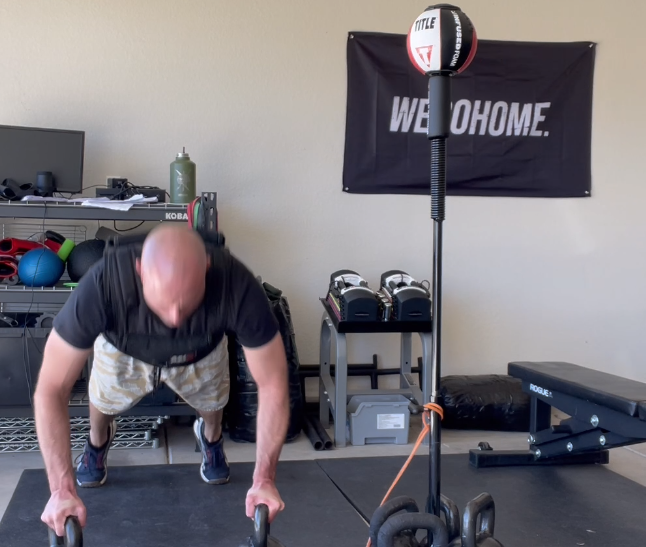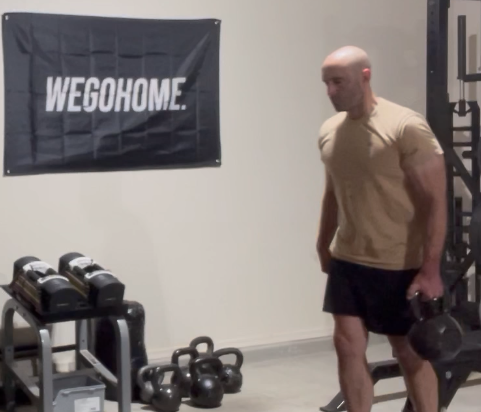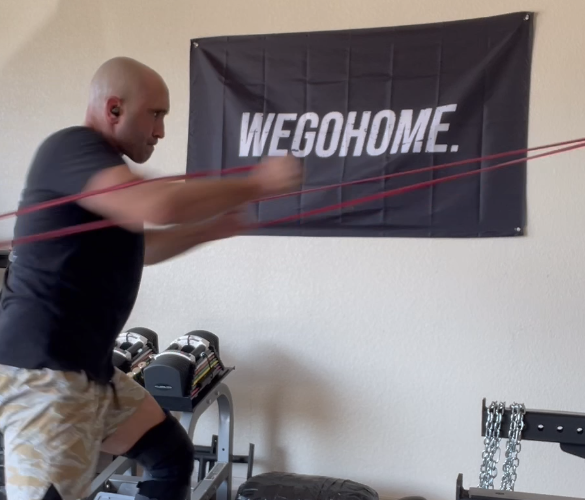Key Takeaway
Open and closed chain exercises both provide value for First Responders/Tactical populations.
Closed chain exercises are defined as exercises that are fixed on the ground or some other object- Examples- push ups, squats, pull ups, etc.
In these examples the hands/feet are on the ground for the push ups, while squatting the feet are pushing on the ground, and you’re pulling on a fixed bar with pull ups.
Open chain are the opposite. You’re bench pressing with a bar or dumbbell in your hand, you’re using a leg curl machine, lat pull downs, curls...
A common mistake is overusing open chain variations for too long (bench pressing comes to mind) or thinking one group of exercises are superior over the other. Everything in strength and conditioning is a tool for athletes and heroes to reach their goals, and they can be applied in various ways.
Considerations- Upper Body
For some, no matter how much they work on their bench form, change grips, whatever- if they continue to press in an open chain movement like these presses something starts to hurt. This can be their shoulders, elbows, wrists, etc. A very easy way to avoid this pitfall is by simply switching over to a closed chain movement- in this example we will use a weighted push up. Maybe (This is not medical advice, I am not a doctor), but the added stability is just what is needed to give certain tissues/joints a break.
Specifically in this case you’ll also allow for shoulder blades to move freely if you do a full range of motion push up. This doesn’t happen in most horizontal pressing variations because you need to set your back to have a stable base to press from. “Gray beard” heroes would benefit greatly from a simple change like this that might keep them out of their physical therapist’s office.
Considerations- Lower Body
Some of our most productive exercises for strength and power development for the lower body will be closed chain movements. Squat and deadlift variations come to mind, but there are many more and they all don’t include using a barbell. If you’re someone who feels a bit beat up doing these for too long, including certain open chain movements in your warm up and assistance work can be beneficial. Reverse Hyper-extensions can be a great movement to add in, as well as some of the exercises like in the videos below. Anecdotally, using movements like bird dogs, mule kicks or side lying clam shells can be great to warm up our hips and glutes before training.
Closing
It is worth repeating- exercises are just tools for First Responders/Tactical Populations. Some are better for loading and progression, while others are better for assistance/conditioning.
One way to look at this is what do we typically use when we build our upper body? Open chain movements. A lot of times just changing it up and adding in some stability is the change we need we need to keep moving forward. We’re still pressing, just with a different stimulus.
If you’ve spent weeks squatting heavy and your back and knees are starting to hurt- maybe we start to prioritize more open chain lower body movements in the warm up and assistance blocks to hopefully move better and get the right muscles doing their jobs.
All to often we get stuck in our silos because we got phenomenal results using a certain exercise and when that same exercise is no longer doing that job we’re afraid to change it up. You don’t have to be abandon it entirely...maybe just find a similar pattern that loads the body differently, and try that for a few weeks and comeback to it. Once you come back to your favorite lift and get over the brief relearning period you’ll probably smash whatever weight you previously did- without pain.



